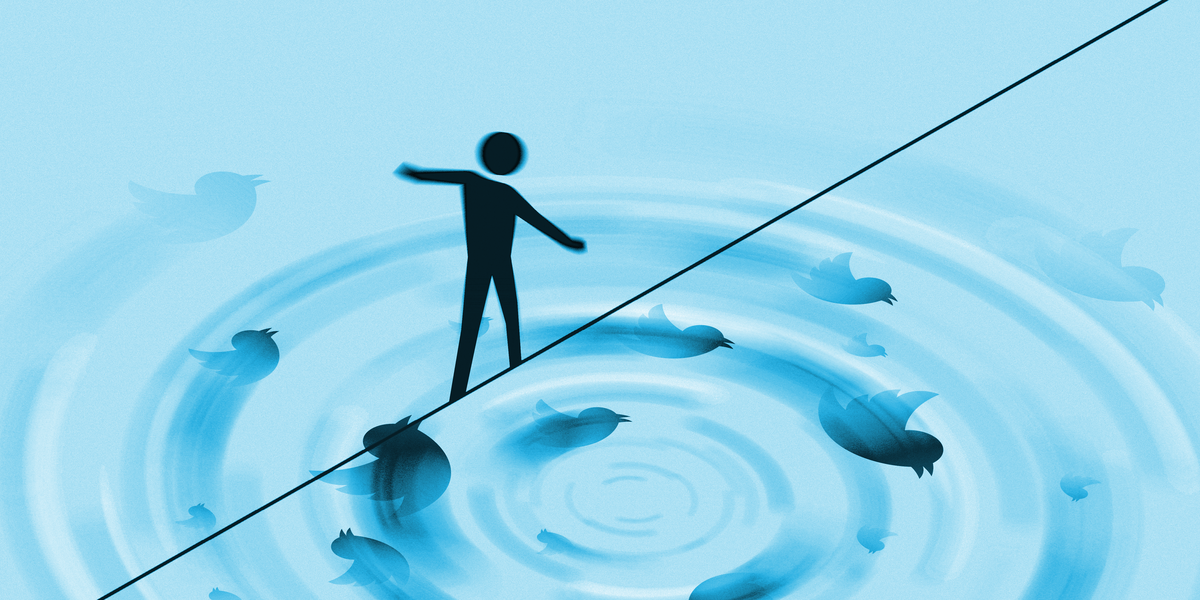
Once upon a time it seemed humanising your brand was key to connecting to your customer.
Take the 90s fashion retailer Delia’s, for example. They created a catalogue of styles for rural suburban teams and positioned the brand as their cool friend from the city. Like catalogues and Delia’s itself, likability is dead.
The cause of death? Twitter.
In his most recent stand-up special, comedian John Mullaney declared that, “Likeability is a jail”, after his cancellation and in 2023 it certainly seems to be the case.
But hold on. What actually is cancel culture?
Cancel Culture entered the dictionary in 2019 and is defined as:
A way of behaving in a group, especially on social media, in which it is common to completely reject and stop supporting someone because they have said or done something that offends you.
Cancel culture originates on Twitter, which is unsurprising considering one of the key components of its algorithm is to present you with content which provokes a ‘strong’ (negative) reaction. Cancel culture in its current form is traced back to a tweet from 2014, in which activist Suey Park created the hashtag #CancelColbert after a joke comedian Stephen Colbert performed on his talk show, The Colbert Report.
Cancellation usually comes after some sort of scandal, and although the goal is usually to end a person’s career or prevent the success of a brand, it's worth noting that good can come from cancel culture. The MeToo movement which gained popularity through a hashtag is a form of cancel culture. The power of cancel culture was present in 2020, when in less than a day Marcus Rashford was able to Tweet the government into making a U Turn regarding their policy on free food vouchers for children during the school holidays. Sticking with football, we saw it once again when Gary Lineker was able to keep his job at the BBC after the organisation took offence to his tweets against the government. At its very best, cancel culture can call truth to power in a way which wasn’t possible before the creation of social media.
So it’s anti establishment?
It can be, and if you listen to the right wing media it’s created by ‘woke snowflakes’. However, cancel culture is a slippery thing. It is not staying still. It is no longer limited to ethical, legal or cultural rights and wrongs. It’s no longer something liberals use to attack the establishment or right wing media. Cancellation can occur when you go against the persona you’ve created.
Cast your mind back to 2016 and the societal divide created by two warring camps that split the US into halves. It was fronted by household names who had known each other for decades, but now found themselves highlighting the cultural divide: Kim Kardashian and Taylor Swift.
Swift was deemed by the court of Twitter as a liar and a snake for seemingly approving a lyric in a Kanye West song on a phone call recorded and released by Kardashian that she disapproved of in public.
If the roles were reversed, would a member of the Kardashian clan be cancelled for being fake? Probably not, their brand is built on the artificial storylines, images and lives they present to the public. Swift’s real crime was that she bakes her fans cookies, rather than the Kardashians who sell them diet pills. When your image involves relatability and niceties, it’s far easier to be thrown off your pedestal.
So how do you recover?
Both Mullaney and Swift embraced their new identities to mixed success, but it can work. Look no further than Caroline Calloway, one of Instagram’s first influencers.
When it was revealed that she had bought her followers, lied her way into studying at Cambridge, hired a ghost writer to create her content and conned her fans into attending workshops which the internet renamed as ‘Fyre Fest 2.0’;Calloway seemingly left the spotlight and deleted all her content.
When she returned, she gave herself a new title as the Queen of Scams. This month she released her memoir ‘Scammer’, which can be yours today for as little as £51 It also comes with a reusable sticker and with no estimated delivery date (on an Instagram story she confessed it could take a few months to receive your copy). However, once Calloway owned her new status, she found a surge in popularity and was the subject of a thinkpiece in this month's British Vogue titled: In Defence of Caroline Calloway.
A new strategy for a new age
Just like likeability may not have always been a bad strategy, highlighting your messiness was not always seen as the best idea. Just a few years ago, social media users tended to be expected to adopt a ‘based on a true story’ angle to their content. You let your followers believe you ate more salads and less carbs, you never spent a Saturday at home and your relationship was the greatest love story that’s ever been told.
Post pandemic, there has been an embrace of ‘casual Instagram’ (think no filtered action shots of a beach day rather than perfectly edited bikini pic). The rise of TikTok has changed the content that’s produced too. Short, funny and brutally honest videos about how you’re feeling resonates better than a filtered sunset. Consumers may be ready to accept a level of honesty from brands now that they were not capable of before in digital spaces where people thought posting ‘be kind’ was the only way to speak about mental health.
However, accepting unlikability may not always be wise. In doing so you will have destroyed any parasocial relationships, for better or worse, and with them any loyalty your audience may have felt for you.
So can cancel culture be healthy or has it become a form of extremism? Is it a threat to free speech? Can you separate art from the artist? Can you ever truly cancel someone?
These are the questions we as a society have been asking ourselves for the past nine years. To answer the first question succinctly without any nuance or on a case by case basis would highlight how black and white we feel we have to be on the internet now. Additionally, like most things on the internet, user intent matters but the trouble is it’s tricky to decode the intent of a sentence written by a nameless identity with a profile you’ve never seen before.
So, to cancel cancel culture would be wrong, and instead we should look at each cancellation and decide if it is worthy. Just like the art vs artist or company vs CEO debate, it's personal and each person will have their own answer to these questions.
Finally, regarding the fate of the cancelled, it really depends on the PR team hired by the brand or person and if said team was able to prevent a Notes App apology screenshot from reaching the internet.
How can brands avoid cancel culture?
Perhaps the only way to avoid cancellation and having a bad reputation is to produce content which is honest and transparent. Easier said than done.



